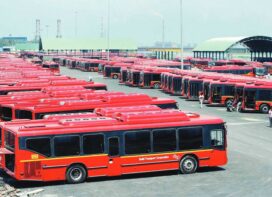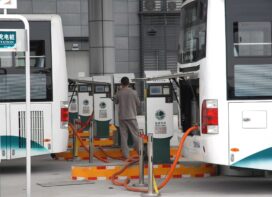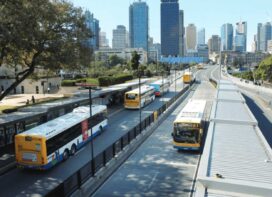For sustainable transport to become effective, Urbanist Dhwani Talati-Padiyar emphasises on a planned approach that more equitably balances development demand with infrastructure supply
 When we discuss transportation, we most often talk about the vehicles, roads, railways and other modes of transport. When we discuss improvement of transport, we progress to speak about smart vehicles, speedier metros and smoother, wider roads. What we also need to look at is designing for the destinations in a matrix based on travel requirements in order to bring them closer so that transport becomes a stitching device instead of a standalone entity.
When we discuss transportation, we most often talk about the vehicles, roads, railways and other modes of transport. When we discuss improvement of transport, we progress to speak about smart vehicles, speedier metros and smoother, wider roads. What we also need to look at is designing for the destinations in a matrix based on travel requirements in order to bring them closer so that transport becomes a stitching device instead of a standalone entity.
Land use planning regulations, to date, have promoted the use and development without sufficient regard to wider transport and infrastructure impacts, leading to expanded and sometimes duplicated transport and infrastructure networks that have not necessarily resulted in increased efficiencies or cost savings, or met with user demand. A planned approach that more equitably balances development demand with infrastructure supply is required.
The dominant type of transport, and its availability to the general population, strongly influences land use and development patterns. Similarly, land use patterns and the location of houses, services and facilities strongly determine the mode of transport chosen or available to access these facilities and services.
A recent short visit to Hong Kong left me impressed with the way expressways connect the hotels, metro stations, parking lots, office complexes and shopping malls directly. This means they enter these structures at various levels – with vertical transport and underground metros interlocking the exits to complete the last mile. They have kept in mind the high footfall of Disney Land and the convenience of unstructured tourists from varied countries. This begins right from the hotel shuttle that drops you to the metro station, which takes you to change various lines without having to change platforms and eventual destination being straight into the private amusement park. This speaks something about the relationship of government and private developers for the larger focus of economic growth, public convenience and city branding.
Relationship of Transport with the Land Use Planning
By shaping the pattern of development and influencing the location, scale, density, design and mix of land uses, planning can help to facilitate an efficient transport-land use system by:
• Reducing the need for motorized travel
• Providing a choice of travel modes, including walking and cycling
• Reducing the distance that people need to travel
• Making it safer and easier for people to access services
• Reducing the impact of transport upon communities
• Reducing the pressure on valuable open space and industrial land
• Improving freight access to key terminals and reducing the negative impact of freight transport on the community
• Reducing the overall infrastructure burden on all levels of government
• Giving tourists a seamless experience, thereby creating a tourist friendly brand for the city
At the level of individual development, integrating land use and transport planning may entail that commercial activities provide sufficient on-site or local parking to reduce demands for on-street parking; and that residential lots can safely access the road network.
At the level of Cities/ local governments, integrating land use and transport planning may entail: planning for high traffic-generating industrial activities in ways that maximize access to key arterial roads; and ensuring that vehicle-oriented commercial activities, such as bulk goods stores, are located in areas that minimize the use of the local road network.
At State levels, integrated land use and transport planning may involve: the protection of major ports, airports and industrial areas from encroachment by residential or other activities that may compromise their function; and promotion of higher density residential and commercial development in areas that support public transport.
 TrafficInfraTech Magazine Linking People Places & Progress
TrafficInfraTech Magazine Linking People Places & Progress


